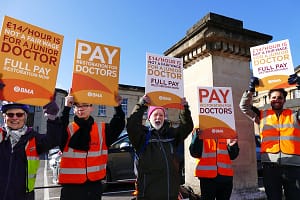The latest consumer spending figures from the Office for National Statistics (ONS) reveal UK households spent a record £32.3bn on health products and services in 2023, up £2.5bn (8.3%) over 2022’s £29.8bn.
Last year, we spent £8.6bn on pharmaceutical products such as medicines, vaccines and vitamins, up from 2022’s £7.9bn. We also spent £4.2bn on consultations with doctors and specialists and £4bn on dentists and hygienists.
Brits also splashed £1.3bn on acupuncturists, aromatherapists and reflexologists, although this figure also includes private nurses and midwives.
One of the most significant amounts of household expenditure was £10bn on in-patient hospital services, including medical care, meals and accommodation charges. This was another new record, up from just over £9bn in 2022.
Dr Avinash Hari Narayanan (MBChB), Clinical Lead at London Medical Laboratory, says: ‘It is great that Brits are now spending more on preventative healthcare measures, such as vitamins, acupuncturists and elective finger-prick blood tests and vaccinations. However, it is concerning that a growing amount of our household spending is going on health issues that the NHS is increasingly unable to fund.
‘For example, we spent £657m on therapeutic equipment last year; that’s items such as spectacles and contact lenses, hearing aids and wheelchairs. Until 1986, the NHS offered free eye tests and glasses for everyone. Similarly, NHS dentistry was initially free. Today, even under the NHS, crowns and bridges will cost most Brits over £260, and that’s if you can find an NHS dentist in your area. It’s small wonder that we are now spending £4bn on dental services, up from £3.6bn in 2022.
‘These record figures appear just as patients in England endure another rise in prescription prices. From 1 May, NHS prescriptions rose from £9.65 to £9.90 per item and the 12-month prescription prepayment certificate increased from £111.60 to £114.50. Prescription costs of almost £10 are becoming a burden on household purses. Until the late 1960s, there was no prescription charge in England, and there are currently no charges in Scotland, Wales and Northern Ireland.
‘So these record figures present a mixed picture in many ways. It does look as if we are becoming inured to spending money on health services and equipment that was previously free, and that does represent some long-term health risks for the UK population if costs continue to rise and services fall.
‘On the other hand, these results also show we are proactively choosing to spend our money on healthcare products to help ensure we remain healthier and fitter for longer. This in turn will reduce the burden on the NHS. It’s a virtuous circle.
‘For those still concerned about easy and affordable access to healthcare, revolutionary new blood tests provide a vast array of information about their health through a simple finger-prick blood test, which can even be taken in their own home.
‘For example, London Medical Laboratory’s General Health Profile blood test monitors seven key areas of health. It includes muscle and bone profile, liver & kidney function, risk of diabetes (by checking levels of HbA1c), cholesterol levels, iron levels and even the risk of gout.
‘Not only is a blood test easy to book, either online or at participating pharmacies and health stores, but it can complement the role of the NHS by identifying problems before any symptoms have shown. London Medical Laboratory’s General Health Profile blood test can be taken at home through the post, or at one of the many drop-in clinics that offer these tests across London and nationwide in over 120 selected pharmacies and health stores.’





Leave a Comment